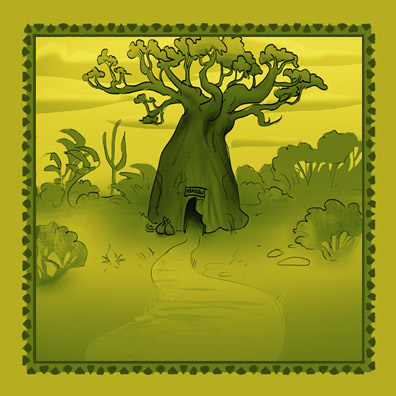
The #”wilderness” in the title refers to the part of the African continent covered by the savannas, and hot and humid tropical forest also known as equatorial rainforest. These forests are exceedingly lush and green throughout the year; the climate does not allow for the variation of seasons, which is why trees in that region do not shed leaves. Temperatures are very high, exceeding 20°C before sunrise and 30°C in the afternoon.
Growing in the equatorial forests are palm, banana, and cocoa trees. The rainforest is divided into layers. The top one consists of the dense intertwined crowns of the high trees that grow even to 30–50m (100–165ft), with individual ones reaching even 80m (260ft). The branches of the trees create a vast green canopy that does not let much light through, therefore plants living in the lower strata are mostly shade-loving.
Characteristic of the rainforest are the lianas and creepers that use tree trunks for support, and climbing them they gain access to light. Another plant that is perfectly adjusted to the conditions is the orchid, which belongs to epiphytes, that is plants that grow on other plants, in this case from tree branches, rather than straight from the ground. One of the trees’ strategies to cope with the hot and humid climate is elongated leaves terminating in spikes to drain rainwater.
Savannas are the grassy expanses covered with interspersed trees and bushes. Rain falls there only at certain times of the year, i.e. in the rainy period, while the dry one is a time of excessive heat.
Baobabs are popular in Central Africa; they are huge and long-living deciduous trees. The leaves, fruit, and seeds of the baobab are edible, and trunks can reach 10m (33ft) in diameter as they serve to store the water necessary for the plants to survive the dry periods. The trunks of ancient specimens are often hollow. That’s why Staś and Nel decided to select one, which they called Kraków (the name of the former Polish royal capital), for their shelter.
In what tree did Staś and Nel find shelter, and why could they use it as a hiding place?2) Lianas and other creepers: by using tree trunks for support to grow towards the sun.
3) Trees: by having elongated leaves ending in spikes to let water down them.
2) savannah.
